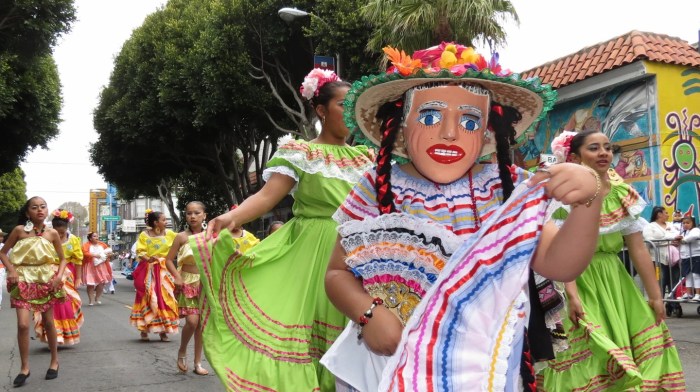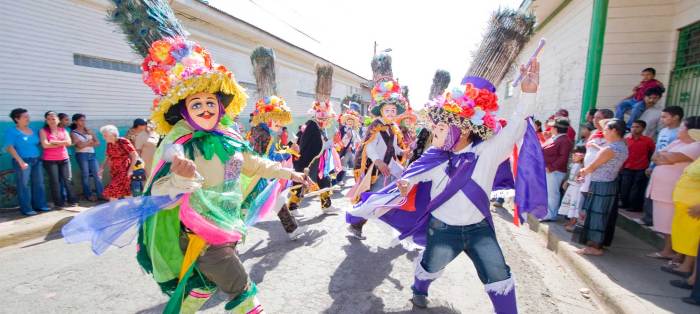Nicaragua’s vibrant festivals, known as “hay varios festivales en nicaragua,” are an integral part of the country’s cultural identity, reflecting its rich history, diverse traditions, and economic vitality. These events bring together communities, showcase unique aspects of Nicaraguan culture, and contribute significantly to the nation’s tourism industry.
From traditional music and dance festivals to religious processions and modern art exhibitions, Nicaragua’s festivals offer a kaleidoscope of experiences. They provide a platform for local artisans, musicians, and performers to share their talents and traditions, while also attracting tourists from around the world.
Festivals in Nicaragua
Festivals in Nicaragua are an integral part of the country’s vibrant culture, reflecting its rich history, diverse traditions, and artistic expressions. They serve as a platform for Nicaraguans to connect, celebrate, and preserve their cultural heritage.
Nicaragua hosts a wide variety of festivals throughout the year, each with its unique characteristics and significance. These festivals range from religious processions to traditional music and dance performances, showcasing the diverse cultural influences that have shaped Nicaragua’s identity.
Types of Festivals
- Religious Festivals:These festivals are deeply rooted in Nicaragua’s Catholic heritage and often commemorate patron saints or important religious events. The most prominent religious festival is the Santo Domingo de Guzmán pilgrimage in Managua, which attracts thousands of devotees annually.
- Traditional Festivals:These festivals celebrate Nicaraguan traditions and customs, such as the Palo de Mayo festival in Bluefields, which features traditional music, dance, and food.
- Music and Dance Festivals:Nicaragua is renowned for its vibrant music and dance scene, and several festivals are dedicated to showcasing these art forms. The International Music Festival in Granada is one of the most popular, featuring performances by renowned artists from around the world.
- Cultural Festivals:These festivals highlight different aspects of Nicaraguan culture, such as its art, crafts, and literature. The International Poetry Festival in Granada is a renowned event that brings together poets from across the globe.
Major Festivals in Nicaragua
| Name | Date | Location |
|---|---|---|
| Santo Domingo de Guzmán Pilgrimage | August 1-10 | Managua |
| Palo de Mayo Festival | May 1-3 | Bluefields |
| International Music Festival | January | Granada |
| International Poetry Festival | February | Granada |
| National Theater Festival | March | Managua |
Cultural Diversity
Festivals in Nicaragua play a crucial role in preserving and promoting the country’s cultural diversity. They provide a platform for different ethnic groups, communities, and regions to showcase their unique traditions, art forms, and beliefs.
For example, the Palo de Mayo festival in Bluefields celebrates the Garifuna culture, an Afro-Caribbean community with a distinct language, music, and dance. The International Poetry Festival in Granada brings together poets from around the world, fostering cultural exchange and promoting the appreciation of different literary traditions.
Examples of Cultural Diversity
- Religious Diversity:Festivals such as the Santo Domingo de Guzmán pilgrimage reflect the strong Catholic influence in Nicaragua, while other festivals showcase the influence of indigenous beliefs and practices.
- Ethnic Diversity:Festivals like the Palo de Mayo festival celebrate the cultural heritage of Nicaragua’s diverse ethnic groups, including Garifuna, Miskito, and Mayangna.
- Regional Diversity:Festivals vary significantly from region to region, showcasing the unique cultural characteristics of different parts of Nicaragua. For instance, the National Theater Festival in Managua highlights the urban cultural scene, while the Palo de Mayo festival represents the vibrant coastal culture of Bluefields.
Economic Impact

Festivals in Nicaragua have a significant economic impact, attracting tourists and boosting local businesses. Major festivals, such as the Santo Domingo de Guzmán pilgrimage, can generate millions of dollars in revenue for the tourism industry.
Festivals also provide a platform for local artisans, musicians, and vendors to showcase their products and services, creating employment opportunities and stimulating economic growth.
Data and Examples
- The Santo Domingo de Guzmán pilgrimage attracts over 1 million pilgrims annually, generating an estimated $10 million in tourism revenue.
- The International Music Festival in Granada draws large crowds, boosting hotel occupancy and sales for local businesses.
- Local artisans and vendors benefit from festivals by selling their products, such as traditional crafts, souvenirs, and food.
Festival Planning
Planning and organizing festivals in Nicaragua is a complex process that involves various stakeholders, including government agencies, local communities, and private organizations.
Successful festival management requires careful planning, coordination, and collaboration among all stakeholders to ensure a safe, enjoyable, and impactful event.
Roles of Stakeholders
- Government Agencies:Responsible for providing permits, security, and infrastructure support.
- Local Communities:Engage with the community to ensure their participation and support.
- Private Organizations:Sponsor festivals and provide financial and logistical support.
- Festival Committees:Plan and coordinate all aspects of the festival, including programming, logistics, and marketing.
Tips and Best Practices
- Start Planning Early:Allow ample time for planning and coordination.
- Define Clear Goals and Objectives:Determine the purpose and desired outcomes of the festival.
- Secure Funding:Identify funding sources and develop a realistic budget.
- Engage with the Community:Involve the local community in planning and decision-making.
- Promote the Festival Effectively:Use various marketing channels to reach target audiences.
- Ensure Safety and Security:Collaborate with law enforcement and emergency services to ensure a safe event.
Festival Marketing: Hay Varios Festivales En Nicaragua
Marketing festivals in Nicaragua is crucial for attracting attendees and generating interest. Effective festival marketing involves promoting the event through various channels to reach target audiences.
Festival organizers should use a combination of traditional and digital marketing strategies to maximize their reach and engage with potential attendees.
Marketing Strategies
- Social Media:Use social media platforms to promote the festival, share updates, and engage with potential attendees.
- Online Advertising:Run targeted online advertising campaigns to reach specific demographics and interests.
- Public Relations:Generate media coverage to raise awareness and promote the festival.
- Email Marketing:Create an email list and send out regular updates, promotions, and reminders.
- Partnerships:Collaborate with local businesses, tourism organizations, and media outlets to cross-promote the festival.
Examples of Effective Marketing Campaigns, Hay varios festivales en nicaragua
- The Santo Domingo de Guzmán pilgrimage has a dedicated website and social media presence, which is used to promote the event and provide updates to pilgrims.
- The International Music Festival in Granada uses a combination of social media, online advertising, and public relations to reach a global audience.
- Local festivals often partner with community organizations and businesses to promote the event and generate local interest.
Festival Evaluation

Evaluating festivals in Nicaragua is essential for improving future events and ensuring they continue to meet the needs of attendees and stakeholders.
Festival organizers should use a combination of qualitative and quantitative methods to evaluate the success of their event.
Evaluation Methods
- Attendee Surveys:Collect feedback from attendees to gauge their satisfaction, identify areas for improvement, and measure the overall impact of the festival.
- Financial Analysis:Track revenue and expenses to assess the financial performance of the festival.
- Stakeholder Interviews:Conduct interviews with stakeholders, such as sponsors, vendors, and community members, to gather their insights and feedback.
- Social Media Monitoring:Monitor social media channels to track online engagement, sentiment, and reach.
- Website Analytics:Use website analytics to track website traffic, user behavior, and the effectiveness of online marketing campaigns.
Benefits of Evaluation
- Identify Areas for Improvement:Evaluations help festival organizers identify areas where they can improve the event for future attendees.
- Demonstrate Value to Stakeholders:Evaluation results can be used to demonstrate the value of the festival to stakeholders, such as sponsors and government agencies.
- Plan for Future Events:Evaluations provide valuable insights that can be used to plan and organize future festivals more effectively.
FAQ
What is the significance of festivals in Nicaraguan culture?
Festivals in Nicaragua are deeply rooted in the country’s history and traditions. They provide a platform for cultural expression, community building, and the preservation of Nicaraguan heritage.
How do festivals reflect Nicaragua’s cultural diversity?
Nicaragua’s festivals showcase the country’s diverse ethnic and regional cultures. They feature a wide range of music, dance, art, and traditional practices that represent different parts of Nicaragua.
What is the economic impact of festivals in Nicaragua?
Festivals attract tourists from around the world, generating revenue for local businesses and the tourism industry. They also provide opportunities for artisans and performers to sell their products and services.